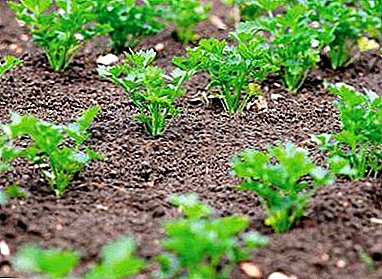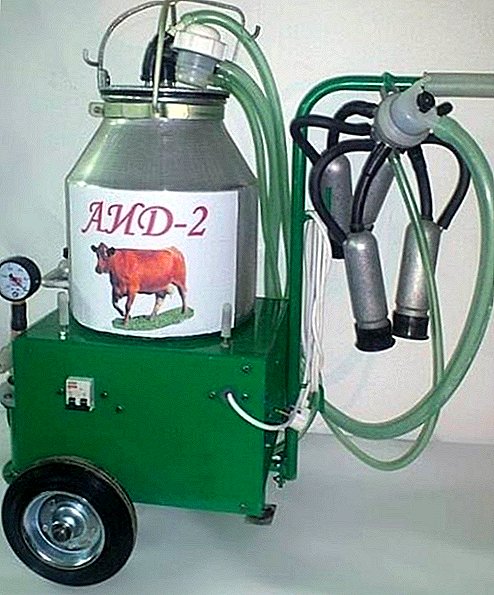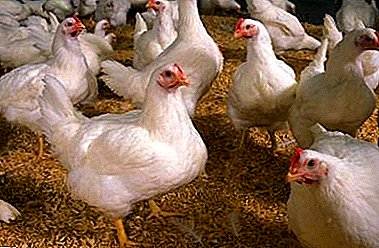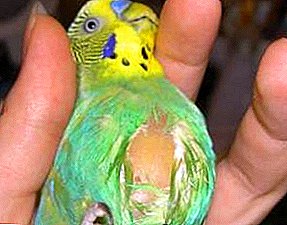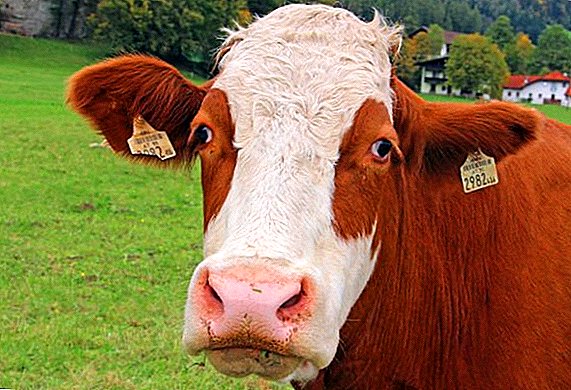 Pregnancy always causes joy and positive emotions. Especially the owner, who noticed that his cow will soon calve. After all, this means that the livestock population will increase, there will be more milk, or another sire will appear.
Pregnancy always causes joy and positive emotions. Especially the owner, who noticed that his cow will soon calve. After all, this means that the livestock population will increase, there will be more milk, or another sire will appear.
What is the afterbirth of a cow?
Calving is a very difficult process, it is always associated with a risk to the life of both the calf and the mother. In this regard, the assistance of a person at this moment is necessary. It should be emphasized that during pregnancy, the female needs special attention and proper care. Then the probability of easy childbirth increases many times.
In the uterus, in addition to the fetus itself, there are amniotic fluid and fetal membranes. There are water, urinary and vascular membranes, which must necessarily leave the uterus after the calf was born. The set of fetal membranes and called afterbirth.
Read more about how long a cow’s pregnancy lasts and how long it can move.
After how much the afterbirth of a cow leaves
The organism of a living being is very rational. Therefore, when there is no need for fetal membranes, they exfoliate from the uterus and leave behind the fetus. For cows, this process can take up to twelve hours. If during this time the last does not come out, you should urgently take action.  Afterbirth of a cow
Afterbirth of a cow
Delayed afterbirth in cows
Experts distinguish between complete and partial delay of the placenta in cows. With a complete delay, gray-white films partially hang down from the genitals of the animal - this is usually the urinary and amniotic membranes. Blood excretions are also noted.
Did you know? In ancient Egypt they believed that the ruler of the sun Ra rose from the ocean on the heavenly cow Hathor.
Full delay of the afterbirth can be diagnosed, if you look closely at the behavior of the cow.
The following are the main signs of such a problem:
- restless behavior;
- arching the back;
- frequent tail lift;
- attempts;
- lack of appetite;
- the animal is constantly trying to lie down.
If the last isn’t all out, its remnants begin to decompose right inside the uterus after 4-5 days. Pus and mucus with fibrin crumbs flow from the genitals of the cow. This delay is called partial.  Kuksa placenta
Kuksa placenta
Why does not depart
Consider the main reasons for the delay in the last of cows:
- Cow weakness due to malnutrition.
- Inadequate or unbalanced diet.
- Significant reduction in walking time.
- Obesity of a cow due to overfeeding.
- Strong uterine distension. It may occur if the fetus is large in size or the female is pregnant with twins.
- Improper development of the fetus.
- The general weakness of the female after a heavy and long calving.
- Diseases of the cow, which deprive of forces, because of which the attempts may be weak.
As you can see, the reasons are divided into 2 main groups: poor nutrition or large fruit and long delivery. If a person cannot influence the size of a calf, then it is quite possible for him to normalize the diet and the time of a pregnant cow’s walks.
Familiarize yourself with the feeding habits of dry cows.
Why is it dangerous
Regardless of the reason for the delay, the consequences are always dangerous for the cow. It is worth noting that even with a slight delay, the animal is restless. 
In addition, the risk of various diseases increases greatly:
- If the last does not go out for a long time, the processes of its decomposition begin inside the uterus. As a result - the female can get sick endometritis, that is, inflammation of the uterine mucosa. If this is not diagnosed in time and not properly treated, infertility can result.
- May also develop vaginitis. This happens when there is an infection in the vagina that provokes inflammatory processes.
- One of the most dangerous diseases in this case is mastitis, a fairly well-known udder disease. If your cow is exposed to it, then the lactation process is difficult or even stopped. Consequently, the female can not even feed her calf. Thus, there is a threat not only to the health of the female, but also to the life of the newborn.
- The most dangerous of all diseases that can occur due to the delay of the last - postpartum sepsis. This is a serious infectious disease, which is always accompanied by high fever, problems with milk and acute purulent processes. If not to take any measures, the probability of a lethal outcome is high.
So as soon as you notice something is wrong - take action immediately and do not expect that the state will improve by itself.
We advise you to get acquainted with the top 10 interesting facts about cows.
What to do
To protect the female from negative consequences, it is necessary to take immediate action. There are three main options for action. For starters, you can try simple methods for which you do not need special equipment and preparations.  Manual separation of the afterbirth in a cow. If they do not give the desired result, you can stimulate the body with appropriate medicines. In the case when the medicine is powerless - independently (manually) remove the afterbirth.
Manual separation of the afterbirth in a cow. If they do not give the desired result, you can stimulate the body with appropriate medicines. In the case when the medicine is powerless - independently (manually) remove the afterbirth.
Simple ways to stimulate
If more than four hours have passed after the calving, and the afterbirth never came out, or did not come out completely, the animal needs help. The easiest and safest method is to give a cow to drink its amniotic fluid from 2 to 4 liters.
They contain substances that stimulate the contraction of the uterus. Thus, the last will come out naturally, without causing harm to the cow. There is also an opinion that the outer part of the afterbirth (if any) can be tied to the tail of the cow.
Important! If you do not have time to collect amniotic fluid, they can be replaced with a sweet solution. In one liter of water, add 0.5 kg of sugar (honey can be), mix well and give to drink. Next you need to wait no more than 30 minutes and give a little salted water (about two liters).
Then she gradually pulls him out. Regarding this method, there are ongoing discussions. After all, if a cow is in shock after giving birth, her behavior is difficult to predict. Then she hurts herself. Therefore, many experienced veterinarians categorically do not recommend this method.  Watering the cow amniotic fluid, as a method of stimulating the separation of the placenta
Watering the cow amniotic fluid, as a method of stimulating the separation of the placenta
Drug Stimulation
The main purpose of the use of drugs - to stimulate the uterus to a sufficient reduction in order to actually push the latter. Best of all for these purposes is suitable drug called "Pituitrin." In its composition there are hormones that are produced by the animal's pituitary gland.
Using a syringe, 3-5 ml of this medicine is injected under the skin. Its action begins within 10 minutes after the injection and lasts up to six hours. The total dosage should not exceed 2 ml per 100 kg of cow weight.
Important! Cow's milk - the result of life. In other words, if your animal is sick, worried, does not eat and does not walk as it should be, it will immediately affect the milk. And not only on the taste. After all, if an animal is infected (for example, because of an afterbirth not removed in time), its products should not be used in the diet, including in dairy feeding of calves.
However, it is not enough to simply cause a contraction of the uterus. It is also necessary to apply Estradiol Dipropionate. This drug activates the process of separating the placenta from the uterus. It is important to know that the above preparations in their compositions perfectly complement each other and do not cause negative consequences from their interaction. 
Radical measures
If a lot of time has passed since the calving, you tried the previous versions, and the last did not come out - you should do it manually. This is quite a radical method of solving the issue, so it is important to carefully follow the instructions.
It will be useful for you to read about why the cow does not get up after calving.
Step-by-step description of this process:
- Wear protective clothing (bathrobe, sleeves, apron).
- Wash hands well, if there are wounds on them - they should be treated with iodine solution.
- Wear high gynecological gloves.
- Epidurally (through a catheter into the space between the solid tissues of the spine), inject 10 ml of novocaine (1% solution) for anesthesia.
- With one hand, release access to the uterus from the protruding part of the afterbirth (if there is one), and run the other hand into the uterine cavity.
- Carefully check how much the afterbirth has separated from the uterus. If it comes out easily, take it out slowly and carefully.
- After this, once again check the uterus for the presence of remaining particles of the placenta.
- If the placenta is not completely separated from the uterus, massage the uterus with the fist from the inside.
- If massaging does not help, gradually, literally with two fingers, separate the afterbirth from the uterus. The outer part must be held free hand.
- The final step will be the introduction into the uterus of antibacterial agents such as: penicillin, Metromax, Lugol solution, streptomycin, Exuter. Please note: you can use only one of the listed drugs.
Video: separation of the placenta at the cow It should be noted that this method should be resorted to only in the most extreme cases, when simpler methods are ineffective.
The cow ate its last
It also happens that the placenta easily goes out and the cow eats it. So many animals do. This is a natural phenomenon and most often there is nothing strange about it. That's just unlike pigs, dogs and rabbits, cows can have undesirable and even dangerous consequences.
It will be useful for owners of cattle to read about how to properly graze cows on pasture, how to wean a cow, butt, how to measure the body temperature of cows, and also to know what to do if the cow got poisoned and devoured crushed meat.
What will happen: possible consequences
First of all, the organs of the gastrointestinal tract are affected. Disrupted metabolism of vitamins and minerals in the body. Breathing becomes faster, pulse accelerates, body temperature rises. In addition, given the characteristics of digestion, the animal can inhale part of the afterbirth. The result of this, depending on the size of the particle, may be asphyxiation and death.
What to do
It is necessary to do everything to ensure that the last as quickly as possible is digested and released naturally. To do this, give the cow drugs that speed up digestion. In addition, you can use Glauber's salt - it will act as a laxative.  Also be sure to follow a strict diet. Feeding the animal should be as easy as possible so as not to overload the digestive tract.
Also be sure to follow a strict diet. Feeding the animal should be as easy as possible so as not to overload the digestive tract.
Did you know? Cows are very human and spiritual animals. It is interesting to know that they memorize their name and respond to it, memorize people's faces, have an attachment to some people, expressing it like a dog - licking their faces.
How to prevent this
As you know, it is better to avoid problems than to deal with the consequences. The presence of a person at birth at a cow is necessary, therefore, as soon as you notice that the placenta is out, you should immediately take it away and carry it away from the barn. It is best to immediately bury the afterbirth in the ground.
Then the cow will not find him and you will not have to worry about her health. We are responsible for those who have tamed. Having spent only a few hours of time to give birth and remove the afterbirth, you will be sure that your cow easily transferred calving. And in case of any problems, you can prevent their aggravation.
Reviews from the network





